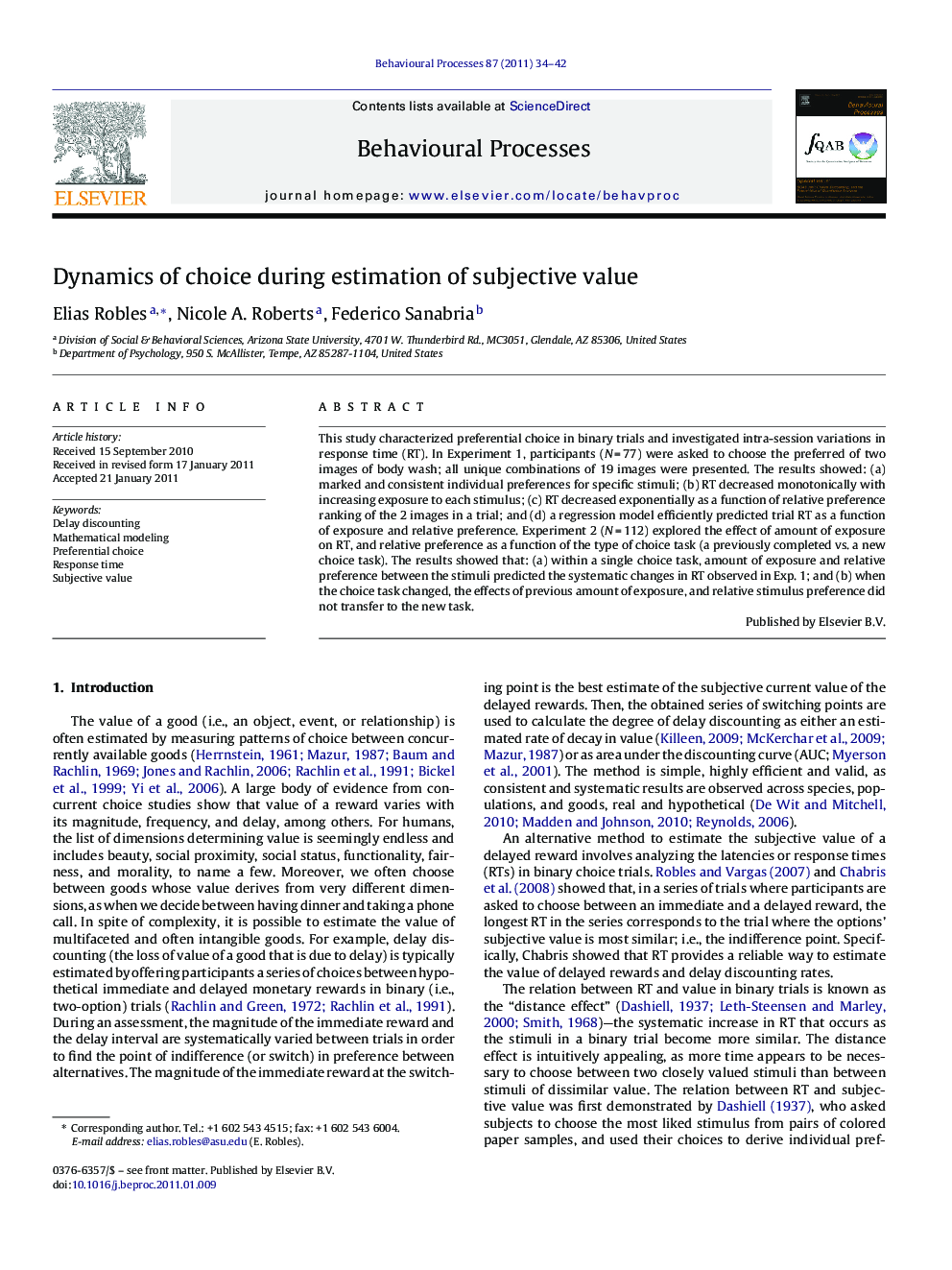| Article ID | Journal | Published Year | Pages | File Type |
|---|---|---|---|---|
| 2427046 | Behavioural Processes | 2011 | 9 Pages |
This study characterized preferential choice in binary trials and investigated intra-session variations in response time (RT). In Experiment 1, participants (N = 77) were asked to choose the preferred of two images of body wash; all unique combinations of 19 images were presented. The results showed: (a) marked and consistent individual preferences for specific stimuli; (b) RT decreased monotonically with increasing exposure to each stimulus; (c) RT decreased exponentially as a function of relative preference ranking of the 2 images in a trial; and (d) a regression model efficiently predicted trial RT as a function of exposure and relative preference. Experiment 2 (N = 112) explored the effect of amount of exposure on RT, and relative preference as a function of the type of choice task (a previously completed vs. a new choice task). The results showed that: (a) within a single choice task, amount of exposure and relative preference between the stimuli predicted the systematic changes in RT observed in Exp. 1; and (b) when the choice task changed, the effects of previous amount of exposure, and relative stimulus preference did not transfer to the new task.
Research highlights► We studied choice preferences and variations in RT in a binary trials paradigm. ► In two experiments, subjects chose between two images of body wash bottles. ► We found marked and consistent individual preferences for specific stimuli. ► A regression model predicted RT based on prior exposure and relative preference. ► Effects of exposure and preference on RT did not transfer to a new choice task.
